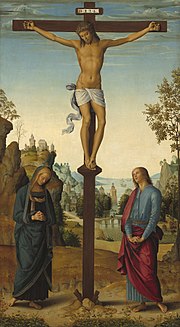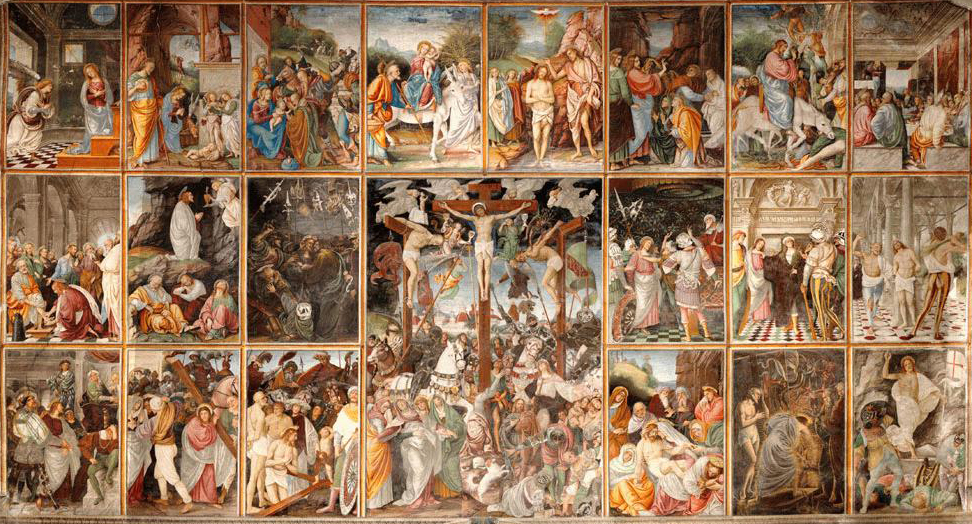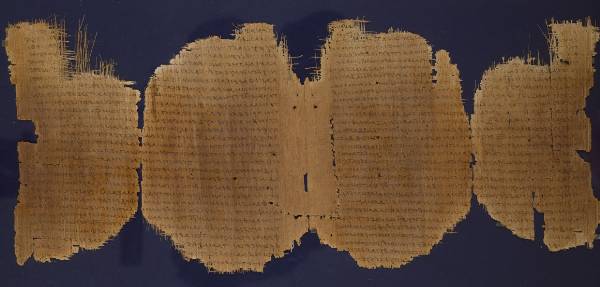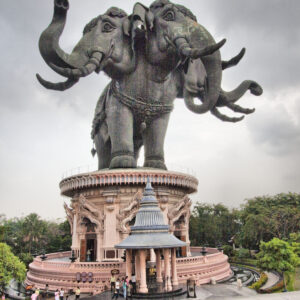Jesus (6 to 4 BC – AD 30 or 33), also referred to as Jesus Christ, Jesus of Nazareth, and many other names and titles, was a first-century Jewish preacher and religious leader. He is the central figure of Christianity, the world’s largest religion. Most Christians believe Jesus to be the incarnation of God the Son and the awaited Jewish messiah, the Christ that is prophesied in the Hebrew Bible.
Virtually all modern scholars of antiquity agree that Jesus existed historically.Accounts of Jesus’ life are contained in the Gospels, especially the four canonical Gospels in the New Testament. Academic research has yielded various views on the historical reliability of the Gospels and how closely they reflect the historical Jesus. Jesus was a Galilean Jew who was circumcised, was baptized by John the Baptist, began his own ministry, and was often referred to as “rabbi”. Jesus often debated with fellow Jews on how to best follow God, engaged in healings, taught in parables, and gathered followers. He was arrested in Jerusalem and tried by the Jewish authorities, turned over to the Roman government, and crucified on the order of Pontius Pilate, the Roman prefect of Judea. After his death, his followers believed he rose from the dead, and the community they formed eventually became the early Christian Church.Accounts of his teachings and life were initially conserved by oral transmission, which was the source of the written Gospels.
Rome Italy – Saint Peter, Apostle of Jesus was crucified Here
Christian theology includes the beliefs that Jesus was conceived by the Holy Spirit, was born of a virgin named Mary, performed miracles, founded the Christian Church, died by crucifixion as a sacrifice to achieve atonement for sin, rose from the dead, and ascended into Heaven, from where he will return. Commonly, Christians believe Jesus enables people to be reconciled to God. The Nicene Creed asserts that Jesus will judge the living and the dead, either before or after their bodily resurrection, an event tied to the Second Coming of Jesus in Christian eschatology. The great majority of Christians worship Jesus as the incarnation of God the Son, the second of three prosopons of the Trinity. The birth of Jesus is celebrated annually on 25 December as Christmas. His crucifixion is honored on Good Friday and his resurrection on Easter Sunday. The world’s most widely used calendar era—in which the current year is AD 2023 (or 2023 CE)—is based on the approximate birthdate of Jesus.
Jesus is also revered in the Baha’i faith, the Druze faith, and Islam. In Islam, Jesus (often referred to by his Quranic name ʿĪsā) is considered the penultimate prophet of God and the messiah, who will return before the Day of Judgement. Muslims believe Jesus was born of the virgin Mary but was neither God nor a son of God. Most Muslims do not believe that he was killed or crucified but that God raised him into Heaven while he was still alive. In contrast, Judaism rejects the belief that Jesus was the awaited messiah, arguing that he did not fulfill messianic prophecies, was not lawfully anointed and was neither divine nor resurrected.
Crucifixion and entombment
Jesus’ crucifixion is described in all four canonical gospels. After the trials, Jesus is led to Calvary carrying his cross; the route traditionally thought to have been taken is known as the Via Dolorosa. The three Synoptic Gospels indicate that Simon of Cyrene assists him, having been compelled by the Romans to do so. In Luke 23:27–28, Jesus tells the women in the multitude of people following him not to weep for him but for themselves and their children. At Calvary, Jesus is offered a sponge soaked in a concoction usually offered as a painkiller. According to Matthew and Mark, he refuses it.
The soldiers then crucify Jesus and cast lots for his clothes. Above Jesus’ head on the cross is Pilate’s inscription, “Jesus of Nazareth, the King of the Jews”. Soldiers and passersby mock him about it. Two convicted thieves are crucified along with Jesus. In Matthew and Mark, both thieves mock Jesus. In Luke, one of them rebukes Jesus, while the other defends him. Jesus tells the latter: “today you will be with me in Paradise”. The four gospels mention the presence of a group of female disciples of Jesus at the crucifixion. In John, Jesus sees his mother Mary and the beloved disciple and tells him to take care of her.

Pietro Perugino’s depiction of the Crucifixion as Stabat Mater, 1482,
In John 19:33–34, Roman soldiers break the two thieves’ legs to hasten their death, but not those of Jesus, as he is already dead. Instead, one soldier pierces Jesus’ side with a lance, and blood and water flow out. The Synoptics report a period of darkness, and the heavy curtain in the Temple is torn when Jesus dies. In Matthew 27:51–54, an earthquake breaks open tombs. In Matthew and Mark, terrified by the events, a Roman centurion states that Jesus was the Son of God.
On the same day, Joseph of Arimathea, with Pilate’s permission and with Nicodemus’s help, removes Jesus’ body from the cross, wraps him in a clean cloth, and buries him in his new rock-hewn tomb. In Matthew 27:62–66, on the following day the chief Jewish priests ask Pilate for the tomb to be secured, and with Pilate’s permission the priests place seals on the large stone covering the entrance.





















Reviews
There are no reviews yet